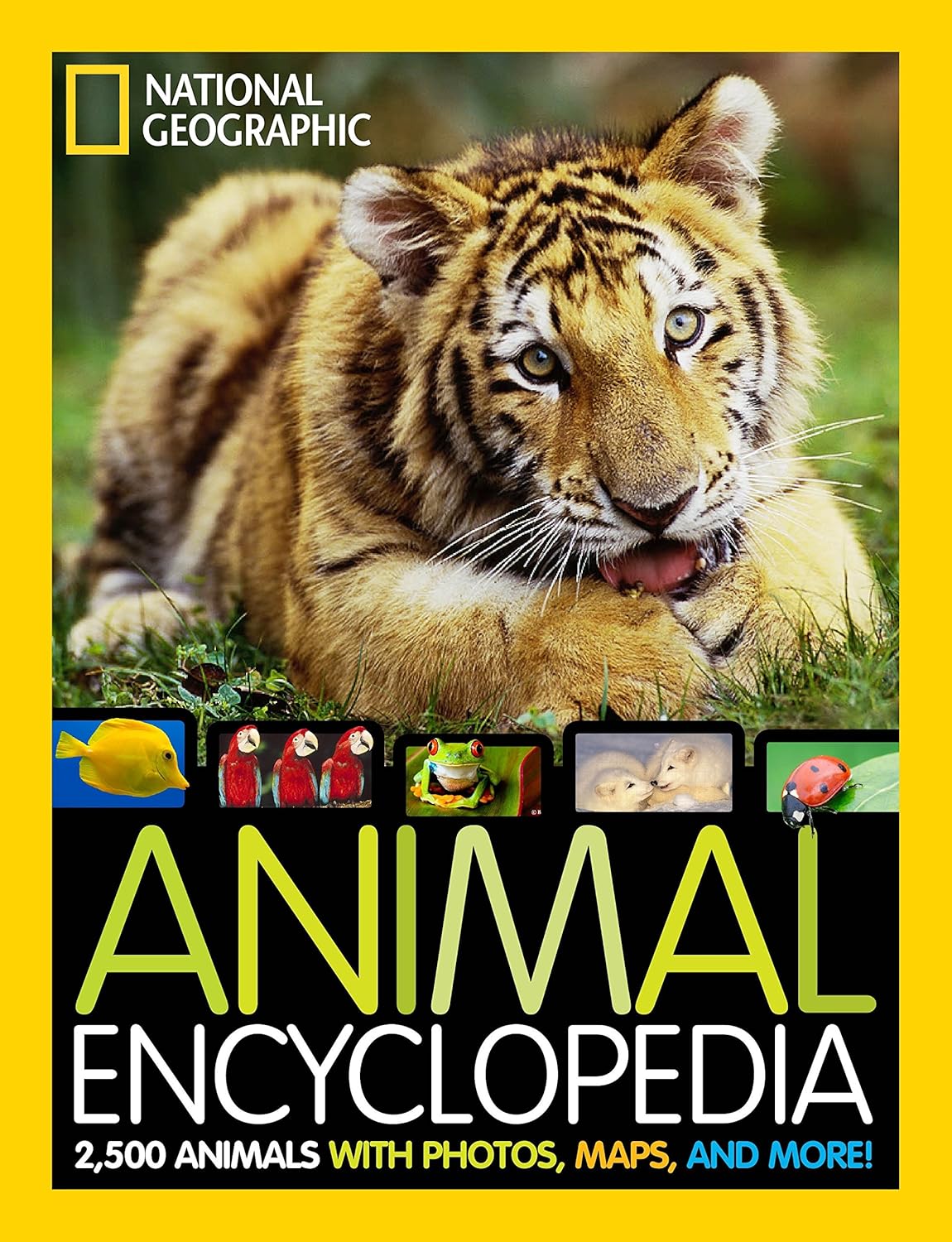
National Geographic Animal Encyclopedia: 2,500 Animals with Photos, Maps, and More! (National Geographic Kids)
FREE Shipping
National Geographic Animal Encyclopedia: 2,500 Animals with Photos, Maps, and More! (National Geographic Kids)
- Brand: Unbranded

Description
A zoo is a place where animals live in captivity and are put on display for people to view. The word “zoo” is short for “ zoological park.” Zoos contain wide varieties of animals that are native to all parts of the Earth. Most zoos have specializedenclosures and habitats for specific animals. Zoos in cold climates, such as Novosibirsk, Russia, must recreate warm ecosystems for animals like lemurs. Lemurs are a type of primate native to the island of Madagascar, off Africa’s east coast. The summer temperatures of both Siberia and Madagascar are about the same—around 21 degrees Celsius (70 degrees Fahrenheit). Species that are not threatened by extinction are placed within the first two categories—least concern and near-threatened. Those that are most threatened are placed within the next three categories, known as the threatened categories—vulnerable, endangered, and critically endangered. Those species that are extinct in some form are placed within the last two categories—extinct in the wild and extinct.
Animal Pictures and Facts - National Geographic
Critics of captive breeding programs say that releasing a few animals into the wild does little to help the species population. Animals are extinct in the wild largely due to loss of habitat. The re-introduction of animals, especially large mammals that require vast territory for survival, does nothing to recover lost habitat. People continue to develop land for homes and businesses. Urbanzoos are common in Europe, while many zoos in the United States developed as sprawling parks in suburbs outside cities. These open-range zoos give animals more territory to roam and provide more natural habitats. This popular technique of building realistic habitats is called landscape immersion.The Bolivian chinchilla rat ( Abrocoma boliviensis) is a rodent found in a small section of the Santa Cruz region of Bolivia. It is critically endangered because its extent of occurrence is less than 100 square kilometers (39 square miles). Ebony ( Diospyros crassiflora) is a tree native to the rain forests of central Africa, including Congo, Cameroon, and Gabon. Ebony is an endangered species because many biologists calculate its probability of extinction in the wild is at least 20 percent within five generations. An endangered species’ extent of occurrence is less than 5,000 square kilometers (1,930 square miles). An endangered species’ area of occupancy is less than 500 square kilometers (193 square miles). A species is classified as critically endangered when its population is restricted to less than 50 mature individuals. When a species’ population is this low, its area of occupancy is not considered. A near threatened species is one that is likely to qualify for a threatened category in the near future.
Animals - National Geographic Kids Animals - National Geographic Kids
However, Madagascar receives about 200 to 250 millimeters (8 to 10 inches) of rain each summer, making it a humid jungle environment. Novosibirsk gets just 60 to 65 millimeters (2 to 3 inches) of rain and snow. The difference in winter temperatures is even more drastic: Madagascar is about 15 degrees Celsius (59 degrees Fahrenheit). Lemurs’ fur can keep them warm at this temperature. Winter in Novosibirsk is -10 degrees Celsius (13 degrees Fahrenheit). The Novosibirsk Zoo has two species of lemur with a specialized heated enclosure with high humidity. Habitat loss from development in the 20th century is the main reason the tree went extinct in the wild. A single specimen survived at the Royal Botanical Garden in Peradeniya, Sri Lanka, until 1990, when that, too, was lost. Deforestation has greatly altered landscapes around the world. About 2,000 years ago, 80 percent of Western Europe was forested; today the figure is 34 percent. In North America, about half of the forests in the eastern part of the continent were cut down from the 1600s to the 1870s for timber and agriculture. China has lost great expanses of its forests over the past 4,000 years and now just over 20 percent of it is forested. Much of Earth’s farmland was once forests. An endangered species is a type of organism that is threatened by extinction. Species become endangered for two main reasons: loss of habitat and loss of genetic variation.The definitions of the three threatened categories (vulnerable, endangered, and critically endangered) are based on five criteria: population reduction rate, geographic range, population size, population restrictions, and probability of extinction. Zoos also existed in later civilizations, including China, Greece, and Rome. The Aztec emperor Montezuma II, in what is today Mexico, maintained one of the earliest animal collections in the Western Hemisphere. It was destroyed by Hernan Cortes during the Spanish conquest in 1520.
- Fruugo ID: 258392218-563234582
- EAN: 764486781913
-
Sold by: Fruugo
